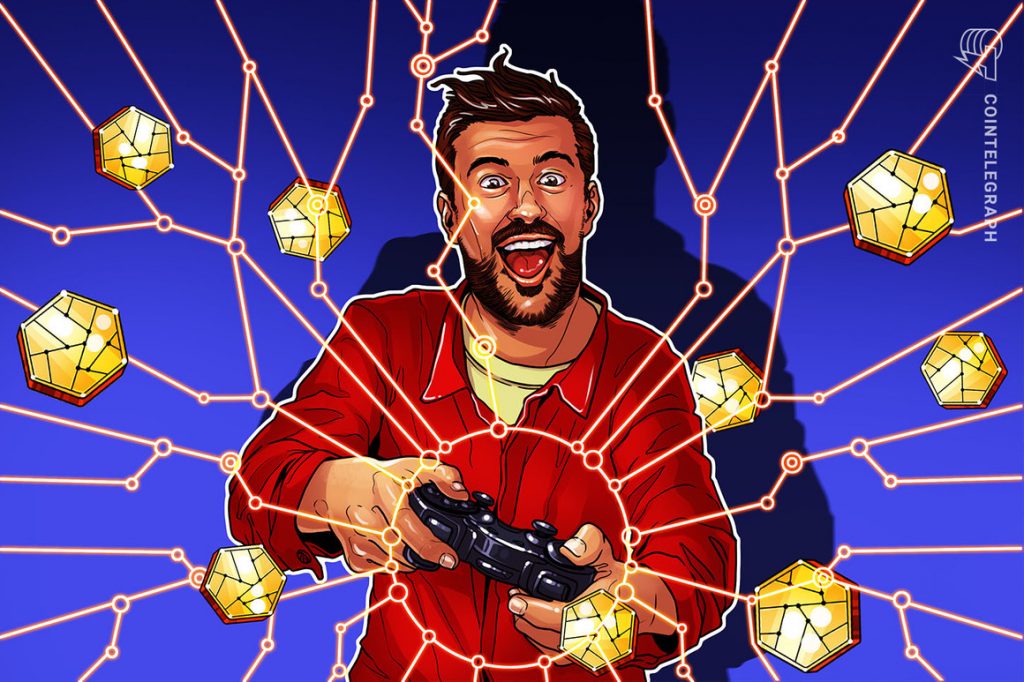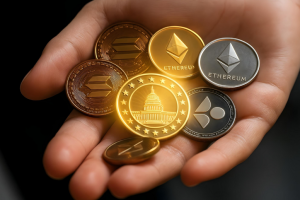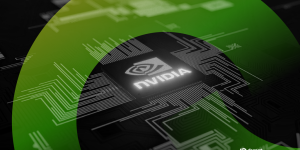Blockchain gaming adoption means more options for gamers

Over the past couple of years, games that use blockchain technology have increased their presence in the gaming industry.
While there were early examples like CryptoKitties — launched in 2017 — the trend has truly gained steam, with major gaming studios even exploring the technology.
At the beginning of 2022, the market capitalization of blockchain games was around $25 billion and it doesn’t seem to be decreasing anytime soon, even in the depths of a bear market. According to the analytical service DappRadar, the two most stable areas this year in the cryptocurrency market are blockchain games and nonfungible tokens (NFT), which have recently become very tightly intertwined, creating a new economic phenomenon.
A striking example here is the well-known game Axie Infinity, the token price of which rose above $150 last fall, providing the project with a capitalization exceeding $9 billion. During the same period, the daily audience of the game was approaching 2 million people.
In December 2021, when Bitcoin (BTC) began to fall from its record highs, the Axie Infinity (AXS) token also began to sink, but the Axie Infinity audience grew to almost 3 million people a day, and the transaction activity in its network increased four times.
There are objective reasons for such dynamics. Firstly, most blockchain games use browsers and the creators use HTML5 and WebGL technologies, which have radically expanded the possibilities for developing browser games. Such games repopulated browsers and, at the same time, provided the ability to connect crypto wallets and withdraw NFTs to external marketplaces without any regulatory restriction.
Secondly, blockchain games have no competition as such, as the traditional PC game industry still refers to the blockchain as an incomprehensible or even “toxic” space. This gives small studios, which are not yet able to create large gaming franchises, a huge head start on development. The ability to quickly launch the in-game economy allows developers to immediately fund the continued development of their game worlds without getting into debt and without inflating working capital.
Finally, blockchain games are mostly about income because in blockchain-based games players can earn money just by playing. For completing tasks and spending time in the game, users receive tokens that can then be invested or converted into real money.
What genre to choose
Just like classic PC games, blockchain games cater to all tastes. They have a number of common features: They work from a browser or a mobile app, have simple controls and have a user-friendly interface that even a beginner can handle.
Blockchain games relate to different genres, while they all have one common feature: They are developed by using smart contracts. That is, they provide an opportunity to receive valuable virtual assets. Therefore, all games, no matter what visual component or story they have, are all play-to-earn (P2E) games. Genres of such games include actions, strategy, online multiplayer arenas, sandboxes and more, but it is possible to define the most popular.
Massive multiplayer online role-playing games (MMORPGs) usually have a dynamic reward system where players get tokens by completing in-game tasks. Tokens are used to upgrade characters in order to gain an advantage over opponents in the form of a fortified arsenal or the development of character abilities. The most popular games in this genre are CryptoBlades, My Crypto Heroes and, of course, Axie Infinity.
If pocket monsters and endless battles seem boring, gamers can pay attention to collectible card games. Such games use the NFT system so that the digital cards look like real collectibles. Players need to strategically outplay their opponents by building decks to counter different tactics, and cards can be bought, sold or traded — just like real cards. Some of the most popular card games are Splinterlands, Gods Unchained and Sorare.
Another interesting genre is “x-to-earn,” that is, to do something to earn income and not necessarily just “play” the game. The concept of “X-to-earn” was first proposed by Ben Schecter, head of operations at RabbitHole — a platform that rewards users for learning about crypto. In this equation, “X” can be any daily activity like eating, exercising, sleeping, shopping or studying. “To earn” is the financial profit received as a result of performing these specific actions.
In blockchain games, the concept of “x-to-earn” was developed primarily in the form of move-to-earn, with the example of the famous STEPN game that rewards users for playing sports or exercising. In the English learning game Let Me Speak, the main way to earn money is to buy NFT avatars and start learning English in the app. Every few minutes, players are instantly rewarded with tokens for their progress.
The most ambitious and large-scale projects are AAA games, or games developed by a major publisher, which require a lot of time, a lot of resources and a lot of money to develop. Such games are designed not only to attract players with the opportunity to earn money but simply to enjoy the gameplay. The combination of real AAA gameplay and stunning graphics sets them apart from the rest. The best example of a AAA game right now is Illuvium, which has been in development since 2020 and was released this year. The Illuvium “ILV” token is currently trading at around $60, according to CoinMarketCap, with a market capitalization of $560 million.
Related: Is Illuvium the first fun crypto RPG video game?
Lesley Fung, a content operation specialist from Footprint Analytics, believes that AAA games are the future of GameFi:
“Some of the AAA Games combine the experienced team with delicate production. The teams behind these projects have a record of success in both blockchain and gaming, and the resources to potentially make a AAA title work. The narrative in GameFi is that current games lack quality and have unsustainable tokenomics. However, once AAA games come out, these will bring GameFi to the masses after the bear market, solving much of the current problems.”
According to Footprint Analytics, which is engaged in discovering and visualizing blockchain data, the most popular blockchain game genre for the first nine months of 2022 was card games such as Splinterland, leaving x-to-earn and AAA games behind.
So, the gaming space is replete with various blockchain games for any taste. Here we chose some unique games from each genre.
Nine Chronicles
Nine Chronicles is an Idle MMORPG developed by Planetarium in partnership with Ubisoft. The client works on the Unity engine, and the backend is completely on the blockchain.
Robert Hoogendoorn, head of content at DappRadar, told Cointelegraph:
“When we’re talking about gameplay, it’s difficult to really point one out. However, on a technological level Nine Chronicles is very unique. While most blockchain games rely on existing blockchain ecosystems like Ethereum, Polygon or BNB Chain, Nine Chronicles runs on its own custom blockchain.”
Furthermore, the entire set of game rules exists on the blockchain, making it impossible for gamers to cheat. Each player can manage a node, participating in the maintenance of the network. Therefore, updating the game also requires all users to update their nodes.
The game focuses on crafting and in order to develop a character, the player has to constantly loot in player-versus-environment (PvE) and craft more powerful equipment.
All fights are resolved automatically, with victory determined by the level of a player’s equipment, its element and randomness in hits. Using the same equipment, the player can both win and lose.
In March 2022, the developers made a global change in the gameplay, wherein equipment level restrictions were introduced.
Solitaire Blitz
In the genre of card games, the fantasy game Splinterlands is now very popular. But, what if a gamer wants to play an old-fashioned card game on the blockchain?
One of the most widely played card games of all time was the classic Solitaire, a game that can be played by people everywhere and of almost any age. Perhaps that is why the developers of Solitaire Blitz took the game as a basis for their project, which now enjoys a considerable number of active players. It is the standard Solitaire card game built on the Flow blockchain. The game has seamless and fairly simple gameplay that makes it attractive.

In Solitaire Blitz, a player competes with opponent players who have similar ranks. The player with the most points wins the game. With a unique algorithm, the skill-based matchmaking system ensures fair competition. Solitaire Blitz is a mobile game and can be downloaded from Google Play or the iOS App Store.
XCAD Network
When thinking of the x-to-earn genre, the first image that comes to mind is move-to-earn games, but this genre is not limited to movements. One of the most intuitive variations of x-to-earn is watch-to-earn, a model that allows players to earn tokens by watching videos.
At the moment, the watch-to-earn industry is run by the XCAD Network project, not a game but a platform that allows YouTube content creators to make fan tokens and release NFTs, thus opening up new sources of monetization and ways to attract fans. As for the fans themselves, they earn fan tokens for watching the content of their favorite bloggers.
XCAD Network differs from other x-to-earn projects in that the amount of reward directly correlates with user activity. The total number of subscribers of all bloggers working with XCAD Network is already more than 260 million.
Another unique feature of the project is that on the XCAD Network, users do not need to watch what the platform offers them. Instead, they simply install the XCAD plugin and watch the same videos as before. And, since the platform is built on the Zilliqa blockchain, users do not face any minimum withdrawal amounts.
MIR4
MIR4 is a AAA game that appeared on the crypto game market in August 2021 and became successful both on mobile platforms and Steam, the largest online store for computer games.
The most important distinguishing feature of the game is partial automation. Auto-battles, auto-collection of game resources and auto-completion of tasks will partly replace manual gameplay, which is suitable for players who do not have enough time.
The storyline continues The Legend of MIR3 PC game, which was closed back in February 2012. The player takes on the role of an archmage’s apprentice guarding the princess, and the main attraction of the game is to upgrade everything, mining hundreds of components and resources.
The interface of the game is quite pleasing to the eye and the game world is huge. The game store has a great selection of items, including leveling boosters, currency, scrolls, power-up stones and others.
As a mobile game, MIR4 is quite beautiful. Of course, for a player who is not used to such projects, it seems that the screen is too loaded with information and inscriptions, but everything is done compactly. Models of characters and monsters are well-detailed.
Interestingly enough, the developers officially allow four windows to be played: one on Steam, two on the official game client and one on a phone. It is worth noting that the Steam version, according to the terms of the platform, is not tied to cryptocurrency and money withdrawal.
The controls are better on the PC version, but the graphics are much nicer on mobile.

In terms of earning real money in the game, the game is filled with “dark steel,” a resource that after level 40, can be exchanged for DRACO tokens. This metal is required for crafting and upgrades. The rate varies but roughly corresponds to the value of 100 thousand dark steel for 1 DRACO. The tokens can be converted into fiat currency and transferred to a bank card.
Trading on the in-game market also starts at level 40. Goods and resources are sold for gold coins, which can later be exchanged for dark steel and converted into DRACO.
MIR4 has good graphics, animation, special effects, dynamic battles and beautiful characters. It attracts with the cross-platform, automation, branching development system and a lot of tasks.
The views and opinions expressed here are solely those of the author and do not necessarily reflect the views of Cointelegraph.com.












